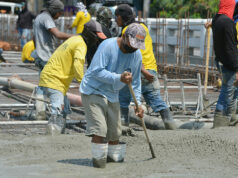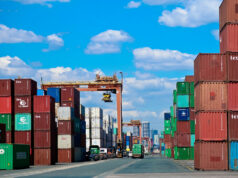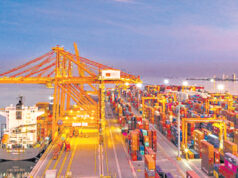Infrastructure spending likely surged in September
INFRASTRUCTURE spending rose 69% year-on-year in September but remained lower in the year to date, indicating limited overall progress in the government’s bid to “catch up” on spending delayed by the late approval of the 2019 budget, according to economic managers who cited preliminary estimates.
Budget Undersecretary Laura B. Pascua said that spending on infrastructure and other capital outlays on September climbed by 69% year-on-year to P100.3 billion.
“For September, infrastructure and other capital outlays (spending) was P100.3 billion,” Ms. Pascua said in a mobile phone message to BusinessWorld yesterday.
In the nine months to September, spending on infrastructure and other capital outlays was still down 4.2% year-on-year at P546.3 billion and also 8% short of the P594 billion target for the period, Finance Secretary Carlos G. Dominguez III said in a media briefing late Wednesday following the economic development cluster meeting.
“Actual disbursements from January to September 2019 amounted to P546.3 billion which is about 92% of the program of P594 and a half billion in disbursements for the period, but 4.2% lower than the actual disbursements for the same period of 2018,” Mr. Domginguez told reporters.
Mr. Dominguez said that while the catch-up plan continues to depend on “accelerated infrastructure spending” for the last two quarters, overall state spending so far was still “weighed down” by the 4.2% contraction from infrastructure expenditure.
“However, this was weighed down by the contraction recorded by the disbursements of infrastructure and other capital delays which were mainly due to the delay in the passage of the 2019 national budget and the election ban,” he said.
The Bureau of the Treasury (BTr) reported earlier that national government expenditure rose 39.01% to P415.1 billion in September, its fastest rise since the 42.7% increase posted in April last year.
Year-to-date spending likewise grew 5.51% year-on-year to P2.627 trillion but missed its P2.685-trillion spending program for the period.
With around 30% or P1.14 trillion left to disburse out of the P3.769-trillion expenditure program for the year, Mr. Dominguez said that the economic team remains “confident” of hitting the target “based on updates from main infrastructure agencies.”
He said that the Department of Public Works and Highways’ spending as of September was P424.7 billion, leaving P300.3 billion left to disburse out of the department’s P725 billion spending plan for the year.
He said DPWH is expecting to inaugurate several projects this year such as the Central Luzon link Express project phase one, the Tarlac-Pangasinan-La Union Expressway, Ciudad de Victoria interchange overpass bridge and a bypass road in Bulacan.
Meanwhile, the Department of Transportation’s spending was P43.7 billion, with P51.37 billion left to disburse to meet its P82-billion goal for the year.
“The DPWH is implementing reforms to effectively address right away issues and accelerate implementation of big-ticket projects,” he said.
Asked why August infrastructure spending was down, Mr. Dominguez said that payments for construction jobs are usually made 30 days after completion.
“You don’t pay for the work done today. You pay about 30 or 40 days later. So what we’re paying for is work that had accelerated a couple of months ago. So that’s the flow of the work. The jobs have been steady and the payments continue to accelerate,” he said.
“We’re hoping that the (2020) budget gets passed, there’s still seven weeks until the end of the year, seven legislative weeks. So there’s enough time to pass the budget,” he added.
The BTr also reported that despite revenue growth 16.89% to P236.5 billion in September, the budget deficit for the month rose 85.52% year-on-year to P178.6 billion, bringing the year-to-date fiscal gap to P299 billion, down 20.95% from a year earlier.
In a note to journalists yesterday, a Philippine National Bank Macro Alert cited “robust primary expenditures” which are continuing to “strengthen fiscal stimulus and imply a larger fiscal contribution” to third quarter GDP growth.
Mr. Dominguez still expects GDP growth to accelerate in the last two quarters with headline inflation expected to settle within the 2-4% official target.
“The government accelerates implementation of the ‘Build, Build, Build’ infrastructure and human capital development projects to make up for the underspending earlier this year due to the delay in the budget. We will intensify our efforts to restore last year’s upward momentum in our growth rate,” he said. — Beatrice M. Laforga



